Disrupting for Good: AI, ...
Online Conference
28 Jan 2026 / 29 Jan 2026 read more
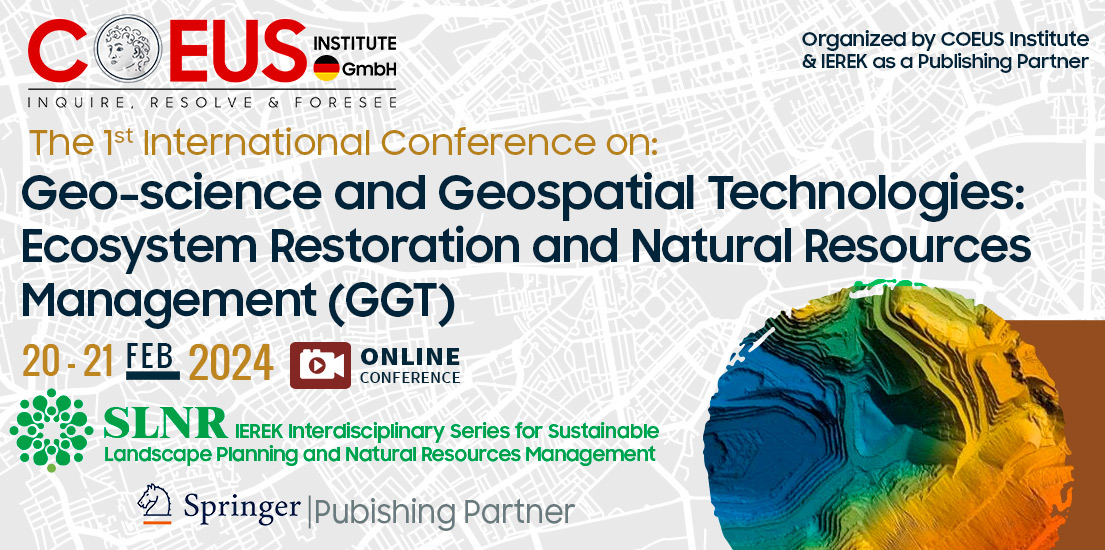
Subscribe to our newsletter
The International Conference on Geo-science and Geospatial Technologies (GGT): Ecosystem Restoration and Natural Resources Management a groundbreaking event that marks a significant milestone in the field of geoscience and geospatial technologies, bringing together experts, researchers, practitioners, and policymakers from around the world to explore the critical theme of ecosystem restoration and natural resources management.
The conference serves as a platform for interdisciplinary discussions, knowledge exchange, and collaboration, with a specific focus on harnessing the power of geoscience and geospatial technologies to address the pressing environmental challenges we face today. By merging both the domains of earth science and spatial analysis, GGT aims to foster innovative solutions and strategies for the restoration and sustainable management of our natural resources.
Ecosystem restoration has emerged as a major concern in recent years, as the consequences of climate change, habitat degradation, deforestation, and biodiversity loss become increasingly evident. The urgent need to restore and conserve our ecosystems requires a multidimensional approach that integrates scientific research, technological advancements, and effective resource management practices. Geoscience and geospatial technologies play a pivotal role in this endeavor, providing powerful tools for mapping, monitoring, and analyzing the Earth's physical and biological systems.
The First International Conference on GGT brings together a diverse community of professionals and experts, including geographers, geologists, ecologists, remote sensing specialists, GIS professionals, environmental scientists, and policymakers. Through plenary sessions, keynote speeches, panel discussions, and interactive workshops, participants will dive into a wide range of topics related to ecosystem restoration and natural resources management.
This conference offers a unique opportunity for professionals and researchers to share their experiences, present their cutting-edge research findings, and engage in meaningful discussions on the latest advancements in geoscience and geospatial technologies. Moreover, it aims to foster collaboration among academia, industry, government agencies, and non-governmental organizations, with the goal of establishing a global network of experts committed to ecosystem restoration and natural resources management.
The (GGT) conference is an online conference organized by COEUS Institute where all proceedings submitted to it will swiftly be published within three months, where authors can now have their publications featured in Sustainable Landscape and Natural Resources Management (SLNR) book series by Springer Nature.
The CCP is designed to provide a valuable service to scholars by offering them a streamlined and accessible pathway to see their work published. By leveraging the support of Springer Nature and the Sustainable Landscape and Natural Resources Management book series, the CCP offers a platform that nurtures academic excellence, facilitates knowledge sharing, and enhances the visibility and impact of scholarly research.
The Collective Conferences Platform (CCP) is an innovative initiative that brings together multiple conferences under the auspices of Springer Nature. Through the platform, authors can swiftly publish their papers, benefit from the expertise of a renowned publisher, and contribute to the advancement of knowledge in their respective fields.
| Title | Date |
|---|---|
| Short Paper Submission Deadline | 15 Jan 2024 |
| Notification of acceptance/ rejection of submitted extended abstract/ short paper | 31 Jan 2024 |
| Start Payment Date | 15 Nov 2023 |
| End Payment Date | 31 Jan 2024 |
| Conference Program | 01 Feb 2024 |
| Conference Launch | 25 Feb 2024 |
| Publication | Author | Co-author | Payment Deadline |
|---|---|---|---|
SLNR book by Springer |
150 € |
50 € |
15 Nov 2023 |
The fee covers:
Payment Methods:
Payment of the registration fee can be made via the following methods (only after online registration):
1. Bank transfer
Bank Account Name/ Beneficiary Name: COEUS INSTITUTE GMBH
Beneficiary (COEUS) Address: Simmlerstr. 17, 75172 Pforzheim, Germany
Bank Account (EUR): 5210755
Bank Name: Sparkasse Pforzheim Calw
IBAN: DE75 6665 0085 0005 2107 55
SWIFT/BIC: PZHSDE66XXX
Post Code: 75172
*** VAT is applied on some countries, please check the PDF HERE before payment ***
*** Please note that the transaction fee is solely the payee’s/ Remitter’s responsibility. The Beneficiary should receive the total amount specified above without deductions. Incomplete amounts may result in an outstanding amount and a request for completion***
*** After you have completed the payment, kindly inform us with full transaction details. The transaction will remain marked as pending until we receive confirmation. After you make your transfer, kindly send us a scanned copy of the receipt to [email protected] ***
2. Online payment gateway (Stripe)
Participants who would like to complete their payments online must send a request to the conference coordinator/ email and CC [email protected] to receive a customized electronic invoice to complete their payments.
Payment Terms and Guidelines:
This process can only be initiated after payment completion and confirmation:
All accepted submissions to the conference, after a rigorous double-blinded peer-review process by the respective and a highly-extinguished Editorial Board, will be published in:
 Sustainable Landscape Planning and Natural Resources Management (SLNR), an IEREK Interdisciplinary book series published by Springer Nature.
Sustainable Landscape Planning and Natural Resources Management (SLNR), an IEREK Interdisciplinary book series published by Springer Nature.
About SLNR
Sustainable Landscape Planning and Natural Resources Management (SLNR) is a peer-reviewed book series that presents groundbreaking research through the intersection of two main areas that of which are ‘Sustainable Landscape Planning’ and ‘Natural Resources Management’. The series initially covers a wide range of academic disciplines in sustainability, including landscape ecology, green urbanism, urban regeneration, land restoration and renaturation, energy management, and nature conservation. Moreover, it also incorporates the latest developments and research in engineering topics that contribute to more sustainable cities, such as Geosciences, infrastructure, civil engineering, geology, mining, water, and natural resources conservation and management.
By showcasing methods for discovering, managing, and employing natural resources, the series aims to provide approaches that enable the responsible use of these resources. Ultimately, the SLNR series is committed to advancing the United Nations' Sustainable Development Goals for 2030. Read More
Attending a conference dramatically enhances both your professional and personal development. They help you sharpen the saw, meet and converse with industry experts, expand your resources and grow your professional network. IEREK Conference will help you:
1. Open Discussions: We bring together leading academic scientists, from different universities and countries, to exchange and share their experiences and research results.
2. Internationally Accredited Certificate: The participants are granted internationally recognized certificates acknowledged by IEREK, and Partnering Organization.
3. Publication: Selected high-quality manuscripts will be published, after peer review, in the Advances in Science, Technology & Innovation (SLNR) book series by Springer
4. Research Technologies: Conferences can expand your resources by providing a great opportunity to promote gathered information on new technologies related to your research.
5. Networking: You can engage with industry experts to discuss with them the very latest research projects they could be working on and increase your chances of collaboration in future projects.
6. Academic Reputation: Attending many conferences will make you a known figure in academic circles and an active member of the academic community.
7. Conference Abstracts Material: Delegates will receive the conference Abstracts book in soft copy.




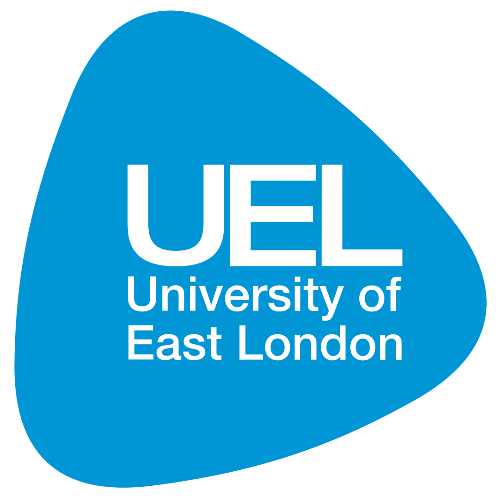







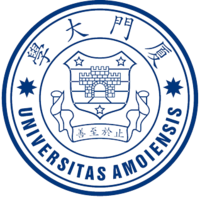

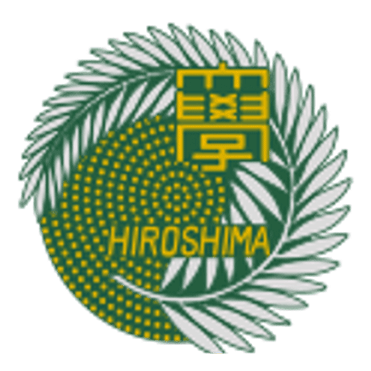
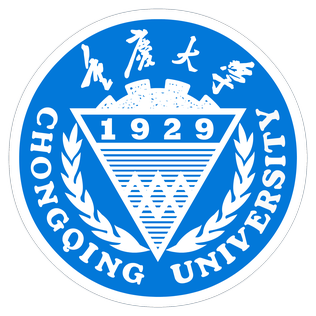
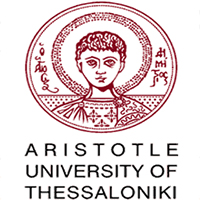
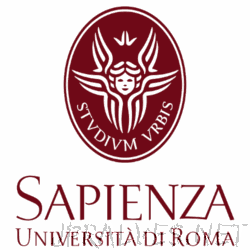
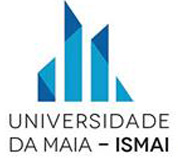


Subscribe to our newsletter
Join IEREK community